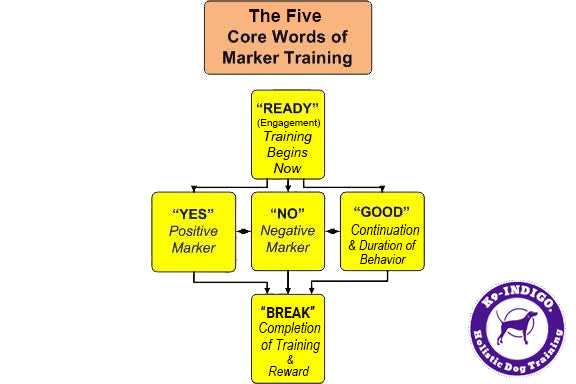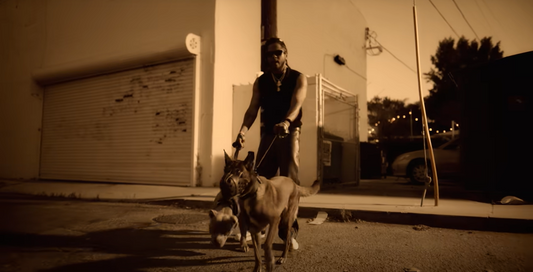1. READY or ARE YOU READY?
-
This phrase tells our canine that we are about to start the game/training session. When we ask, " are you ready", you always have something on you to reward the canine with when he engages with you and or starts to offer behaviors. As you and your canine gains experience, you should never start training unless the dog demonstrates he is ready to play or eat when you take him out; we call this engagement.
-
Getting engagement from a dog is a learned skill.
-
If the canine does not play or eat then, handlers need to put the canine away and think about what they need to do to get the canine engaged.
-
The relationship between you and your dog is more important than training theirfor; engagement is the number one priority for the relationship.
2. YES is the word we use as a positive marker.
-
We use this positive marker to bridge the time frame between the desired behavior and us delivering the reward. Once the canine has been introduced to the concept of "YES" (we call this CHARGING THE MARK), they quickly learn that EVERY TIME you say YES, they know they will get the reward.This phrase tells our canine that we are about to start the game/training session. When we ask, " are you ready", you always have something on you to reward the canine with when he engages with you and or starts to offer behaviors. As you and your canine gains experience, you should never start training unless the dog demonstrates he is ready to play or eat when you take him out; we call this engagement.
-
We must understand that "YES" is not verbal praise. *
-
We are to MARK THE MOMENT and then praise the behavior after the marker.
3. GOOD is a word that means "You're doing perfect, keep the behavior going."
-
GOOD is the continuation marker word we use to add duration to a behavior. A perfect example would be to use GOOD when we are teaching the canine to stay in lay.
-
GOOD is not our release command. When we say GOOD, the canine needs to understand that if he continues to do exactly what he was doing when we said GOOD, he will get a reward at some point in the future of the game/session.
-
Unlike training the Yes marker, when we first start training duration, we can say GOOD a number of times in a row. We can say GOOD GOOD GOOD as many times as we need to get the dog to continue to do the desired behavior.
4. "NOPE MARKER" is Valuable Information for Your Dog
-
NOPE is the saying that is used as a negative marker.
-
It means you just made a mistake and you have to do the exercise all over again. It does not mean we are mad, it does not mean that he is going to get a correction, NOPE means "DO IT AGAIN."
-
Your canine will learn that "NOPE MARKER" is information. When you don't offer a marker, you tell the canine that he has not yet performed the behavior you desire. This is not a negative response on your part, it is merely a non-stressful way to tell your dog that he needs to "keep trying."
5. BREAK or DONE (as in "take a break") is the marker word that tells the dog that our game/session is complete for now.
-
The game/session can be finished for 5 minutes, or it can mean we are done for the day.
-
When we say DONE, food or toys are put away. When the handler says DONE or BREAK and shows his dog his empty hands, it doesn't take long for the dog to know that this game/session is completed.
-
With time and practice, the K9-INDIGO® Marker Training System becomes a very clear and consistent canine communication system to our canines.






